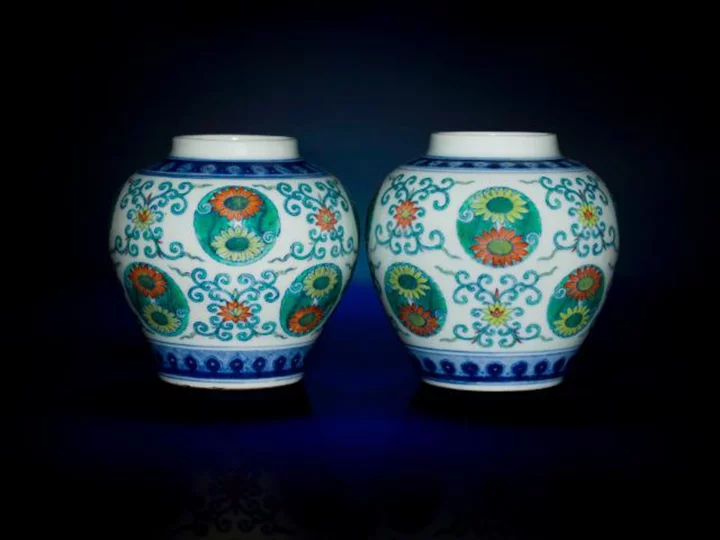A pair of jars purchased as part of a batch of ceramics from a London thrift store for £20 ($25) sold for almost 3,000 times that after they were found to date back to the Qing dynasty.
The two imperial Chinese doucai "lotus and chrysanthemum" jars, which were produced in the 18th century, fetched £59,800 ($74,500) at Roseberys auction house in London on Tuesday.
Doucai is a porcelain painting technique. It was used in the earlier Ming dynasty where designs are outlined in blue before being glazed, Bill Forrest, associate director and head of Chinese, Japanese and southeast Asian art at Roseberys, told CNN prior to the sale.
"They definitely have a presence that's hard to explain," Forrest said at the time. "A really good piece of imperial porcelain is so well manufactured, so well produced with such skill and care, that they kind of exude a presence that is kind of very difficult to explain."
Chinese imperial porcelain is "rare" and doesn't come up often, having only been commissioned for the Imperial Court, Forrest said.
The 11.5-centimeter (4.5-inch), delicately painted jars display blooming chrysanthemum heads and winding lotus leaves in vivid enameled red, yellow and green with a blue underglaze.
Although a prototype for this particular design has not been found, the pattern is recognized on bowls that have been excavated from Ming imperial kilns, according to the listing.
According to Forrest, the seller of the jars, who has not been named, is a "passionate collector" of ceramic objects. They saw the items in a thrift store last year and just "had to acquire them," without even knowing their value.
"I think anyone who is in the presence of imperial Chinese porcelain, regardless of their experience, will feel drawn to them on some level," Forrest said.
It was only when the seller researched the inscription found on a label at the base of one of the jars — "Qianlong" — that they realized the potential significance of the porcelain. They then took the items to the auction house for inspection. Both bases are stamped with the six-character seal.
Qianlong was the fourth emperor of the Qing dynasty who reigned for six decades.
"My heart sinks when I read of Chinese objects being sold through charity chops for a mere pittance," Forrest said. But he added that Chinese porcelain is a very specialized field and, given the donations charities receive, charity workers can be forgiven for overlooking them.
However, he said the seller would donate a "significant portion" of the profits to the charity that owned the thrift store, although no exact sum has been given.
Jars with the same design have been sold in past auctions. A pair accompanied with their lids sold at Sotheby's London for £277,200 (about $347,000) in November 2021.

